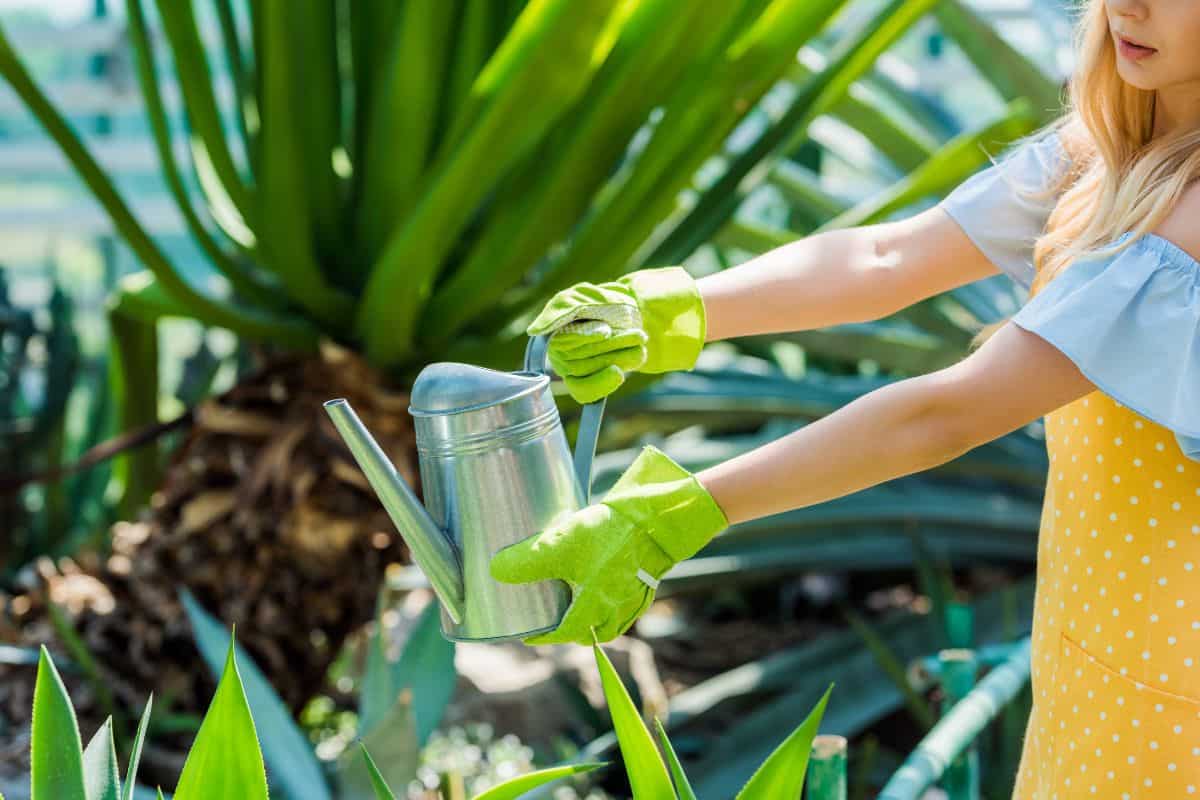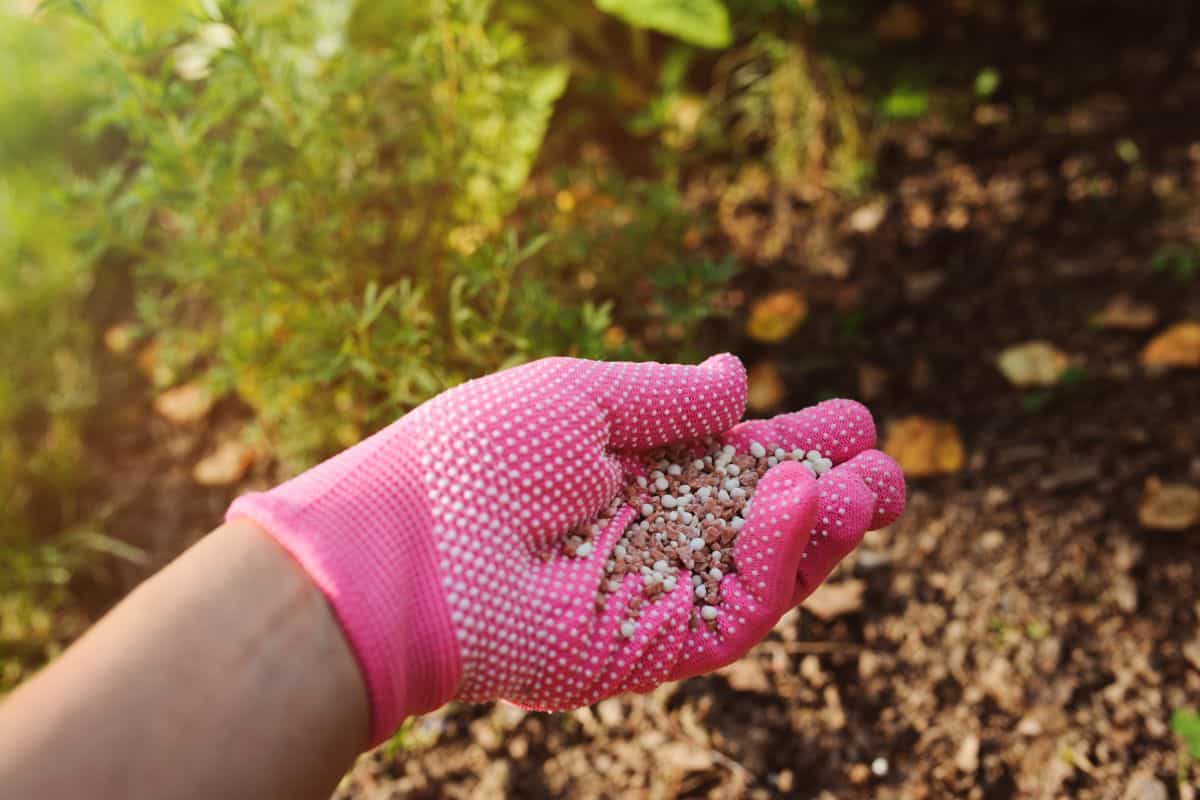Avocados are an ingredient in a wide variety of healthy recipes. If you would like to, it is possible to grow your own avocado trees. But there are challenges to overcome in harvesting healthy avocado fruit. One of the most common challenges is root rot. What causes it, and how do you treat it? We did research to help you solve this problem.
Several types of fungi, such as Phytophthora, Armillaria Mella, and Aphanomyces, cause the roots of an avocado tree to rot. The affected trees wilt and eventually die.
To treat this disease, fungicides are used. However, the treatment is more effective by adding control measures, including:
- Add gypsum to the soil
- Mulch base of tree
- Treat the water
- Reduce the amount of water
- Drain the soil well
- Add fertilizer
- Air-dry the roots
Keep reading to learn how to treat root rot, what to do to fight off the disease, and how to prevent the disease from spreading. We will also discuss the signs of root rot to watch out for, and tips for growing a healthy avocado tree.

How Do You Treat Root Rot In Avocado Tree?

Root rot occurs in areas with poor drainage or when you overwater the trees. The fungi thrive and spread through the wet soil.
There is no definite treatment for root rot, but using fungicides, combined with preventive measures can be effective.
As soon as you notice the signs of this disease on your avocado tree, take action by buying the correct fungicide. But don’t use just any fungicide. First, find out what type of fungi is causing the disease. You can do so by consulting with an agricultural agent from your area.
Using Fungicide For Root Rot
A fungicide, which is available in a synthetic or organic form, kills the fungus causing the root rot. You can use it as a preventive measure before the disease attacks your trees. You could also use it after the disease has attacked the roots to prevent it from spreading.
Research reveals that fungicides that contain potassium phosphonate are effective. This is because it improves the resistance of the avocado tree against root rot.
Injecting the fungicide into the trunk or watering the roots are considered more effective methods of treating the disease. They're better than spraying it on the tree trunk.
Below is a table that provides a brief look at the benefits and drawbacks of using fungicides to treat root rot:
| Benefits | Drawback |
| Kills fungi fast | Depending on the seriousness of root rot, it may not cure it |
| Easy to use, not requiring training or special equipment | Is not effective alone, and should include other control measures |
| Easily available and affordable | Some types of fungicides are expensive |
| Available in organic or synthetic form | Can be toxic if instructions are not carefully followed |
| Use both as a preventive measure and treatment |
As you are treating this disease with a fungicide, it is important to note that it does not provide a once-and-for-all cure and should be accompanied by the following control measures:
Add Gypsum To The Soil


This is gypsum that you can find on Amazon.
Gypsum contains calcium, an excellent mineral that prevents the growth of the root rot pathogen spores. Depending on advice from an expert, pour the correct amount of gypsum and mix it with soil up to 6 to 10 inches deep. You can also gently scatter the powder around the tree and then water it.
Mulch Base Of Tree



Check out this wood chip mulch on Amazon.
Wood chips are a mixture of wood and bits of tree bark and are excellent for mulching. The varying sizes of the wood and bark allow water to pass through the soil preventing the soil from being closely packed. The chips decompose at varying degrees, providing an excellent environment for the growth of organisms.
Apply between 4 to 6 inches of wood chip mulch around the base of the tree. Extend it further than the branches of the tree when spread out. This mulch provides crucial benefits to your tree because the organisms in it can kill the pathogens that cause root rot.
Treat The Water
Your avocado may receive water with too much salt, boron, chloride, or sodium, which can quicken the spread of root rot. If this is the case, you may want to consider treating the water.
Reduce Amount Of Water

Reduce the amount of water you give the avocado tree. Root rot may indicate that the avocado tree is receiving too much water through drip irrigation or other watering methods.
It's the reason avocados are grown in tropical and sub-tropical areas that do not receive too much rainfall.
Drain The Soil Well
If the area where you have planted the avocado has drainage problems, root rot can spread quickly. Solve this problem by digging tunnels to drain away the water.
You can also dig tunnels as a form of protection. Channel the water from the infected trees away from the trees not infected.
Add Fertilizer


This is 20-20-20 fertilizer that you can find on Amazon.
Fertilizers such as a 20-20-20 plant food can help fight off pathogens causing root rot. Applying it four times a year is sufficient to help your tree grow healthy.
Air-Dry The Roots
Remove the soil from the trees already infected with root rot, exposing the roots. Allow the roots to dry for some days, which may stop the spread of this disease.
Cover the roots with a cloth to provide shade, while protecting them against the sun's rays. After the roots dry, use clean soil and cover the roots.
How To Tell If Your Avocado Tree Has Root Rot
You wouldn't want your avocado tree to get infected with disease without your knowledge. There are signs to alert you that your tree has root rot.
Root rot can affect the avocado tree at any age and size. The first visible sign that your tree is infected is when the leaves turn from light green to yellow. The roots also turn black, and finally die if not treated.
As the disease advances, the leaves will wilt and finally drop. Afterward, the fruit is sun-scalded because it is exposed to the sun. After all, there are no leaves to protect it from the sun.
Fruit production will decline and eventually stop altogether.
Tips On Growing Healthy Avocado Trees
After learning how to treat and fight off the pathogens causing root rot, you may benefit from a few tips on how to grow healthy avocado trees, including:
Add Fertilizer

The soil composition determines what type of fertilizer and the amount to use on your avocado plant. Fertilizer replaces the nutrients that are not in the soil. But if you plant and take care of the trees properly, you can minimize the amount of fertilizer you use.
Use Adequate Water
As mentioned earlier, avocado trees don’t need too much water. Too little water is not good either. Generally, before the tree is one-year-old, water it two or three times per week. After that, you can reduce the frequency to once a week.
Remember that the soil need good drainage as too much water in the soil will cause root rot. You can set your irrigation system for your trees to receive the required quantity of water.
Pruning
Avocado trees do not need much pruning, especially during the time they're producing fruit. However, don’t forget to cut off dead branches.
Harvesting

This is the best part of growing an avocado tree. You finally harvest and eat your avocado fruits. It’s interesting to note that avocados do not ripen while on the tree. Pick the fruit when it is firm. Afterward, leave them to ripen at room temperature for close to two weeks until they are soft.
In Closing

The avocado is a fruit you can eat on its own or use in many recipes. Even though they are readily available in local stores near you, you may decide to grow your own.
Growing avocado trees has its fair share of challenges, including root rot. But this should not discourage you. The first thing you need to know is the signs of this disease.
Secondly, it's good to know the fungi causing it so that you may apply the correct fungicide. Thirdly, there are control measures you need to follow to either help fight off the disease or prevent it from spreading.
Check out these related posts:
